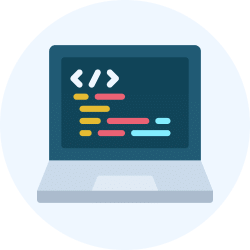Software Development Exam > Software Development Videos > Android Application Development (Mobile App) > Android Application Development Tutorial - 119 - Setting up method to Read SQLite
Android Application Development Tutorial - 119 - Setting up method to Read SQLite Video Lecture | Android Application Development (Mobile App) - Software Development
FAQs on Android Application Development Tutorial - 119 - Setting up method to Read SQLite Video Lecture - Android Application Development (Mobile App) - Software Development
| 1. What is SQLite in Android application development? |  |
Ans. SQLite is a lightweight, embedded relational database management system that is included in the Android operating system. It allows developers to store, manage, and retrieve structured data in a local database within an Android application.
| 2. How can I set up a method to read SQLite in Android application development? |  |
Ans. To set up a method to read SQLite in Android application development, you can follow these steps:
1. Create a subclass of SQLiteOpenHelper to manage database creation and version management.
2. Override the onCreate() method to define the database schema and create the necessary tables.
3. Override the onUpgrade() method to handle database upgrades when the version changes.
4. In your activity or fragment, create an instance of your subclass and call the getReadableDatabase() method to obtain a readable SQLite database object.
5. Use the query() method of the SQLiteDatabase object to perform read operations on the database, such as selecting data from tables.
| 3. What are the advantages of using SQLite in Android application development? |  |
Ans. Some advantages of using SQLite in Android application development are:
1. Lightweight: SQLite is a self-contained, serverless, and zero-configuration database engine, which means it requires minimal setup and resources.
2. Speed: SQLite is optimized for performance, making it faster in processing database operations.
3. Reliability: SQLite databases are highly reliable and ACID-compliant, ensuring data integrity and consistency.
4. Portability: SQLite databases can be easily transferred or shared between different devices and platforms.
5. Integration: SQLite is integrated into the Android operating system, providing seamless access to the database functionality.
| 4. Can SQLite handle large amounts of data in Android application development? |  |
Ans. While SQLite can handle large amounts of data, it is primarily designed for smaller databases. In Android application development, SQLite is more suitable for applications with moderate data storage requirements, such as local caching, simple CRUD operations, and small-scale data management. For applications that require extensive data storage or complex queries, it is recommended to consider alternative database solutions like MySQL or PostgreSQL.
| 5. How can I optimize SQLite performance in Android application development? |  |
Ans. To optimize SQLite performance in Android application development, you can consider the following strategies:
1. Use appropriate indexing: Indexing columns that are frequently used in queries can significantly improve query performance.
2. Batch database operations: Performing multiple database operations in a single transaction can reduce overhead and improve overall performance.
3. Use parameterized queries: Using parameter binding instead of concatenating values into SQL statements can enhance performance and prevent SQL injection attacks.
4. Optimize database schema: Designing an efficient database schema, including appropriate table relationships and normalization, can improve performance.
5. Implement proper resource management: Closing database connections, cursors, and other resources when they are no longer needed can help prevent resource leaks and improve overall performance.
Related Searches















